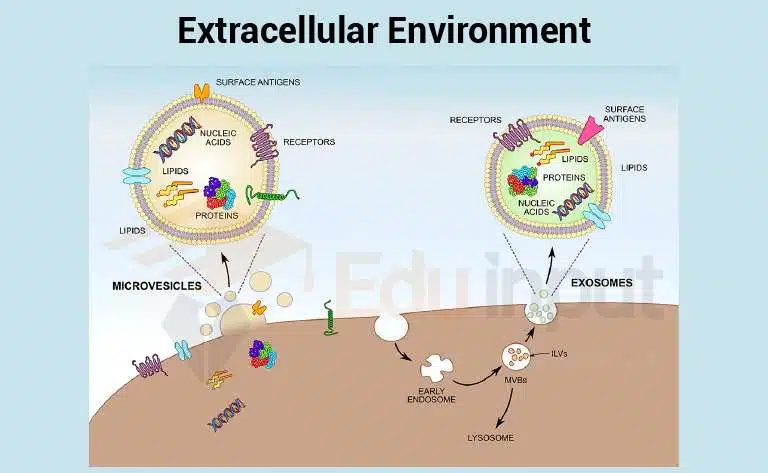Extracellular Environment and Its Role in Defense Response
Extracellular space is the part of a multicellular organism outside the cells, which is usually occupied by fluid. There are many substances in the extracellular space that can affect cellular function.
Stimulating neurotransmitters jump from cell to cell to facilitate the transmission of an electric current in the nervous system. The extracellular environment is also known as the fluid environment. It is also known as the liquid environment. The liquid environment is the environment in which liquids like water, blood, and other body fluids flow.
The word extracellular means “outside the cell” in cell biology and other related fields. This space is usually occupied by fluid and can be found outside the plasma membranes. The term has a different meaning than the one used for the inside of the cell.

Physical influences of the Extracellular Environment
How a cell move is influenced by the physical properties of its surroundings. When trying to understand cell migration in complex tissue environments, the physical aspects of the cell’s environment are a considerable challenge.
An integrated biochemical and biophysical approach is needed to fully understand these problems. In this Review, we outline the findings that have emerged from approaches that span these disciplines, with a focus on actin-based cell migration in environments with different geometry.
Role of DNA In Extracellular Environment
In the context of multicellular organisms, animals, and plants, the capacity to actively release genetic material into the extracellular environment has been reported for bacteria, archaea, and in general. This material can be found in matrices that are outside of the cells.
Role in Immunity and Defense Response
In defense response and disease in animals and plants, there are important roles for the extracellular matrix. Plants and animals have neutrophils, which are important players in immunity. There is a growing amount of evidence that shows the role of extracellular DNA in defense action.
It has been shown that the protective role of extracellular DNA against antimicrobials and mechanical stress is also confirmed in bacterial biofilms.
In parallel, recent efforts highlighted different roles of self and non-self, paving the way for discussions on its role as a damage-associated molecular pattern.



Leave a Reply